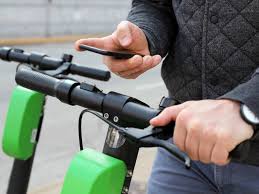Source: techrepublic.com
Electric scooters are invading America, with scooters from popular brands including Lime, Bird, Spin, Lyft, and Uber becoming commonplace in major city centers. These dockless scooters, which are controlled by mobile app, accounted for 45.8% of all micromobility trips in 2018; this number is significant, considering 84 million micromobility trips were taken in 2018 alone, the National Association of City Transportation Officials reported.
The success of scooters are built on the promises of reducing traffic congestion, providing a more efficient and cost-effective means of travel, and decreasing harmful emissions, according to the INRIX’s Micromobility Potential in the US, UK and Germany report. However, scooters are also responsible for at least 1,500 injuries and eight fatalities of US riders since late 2017.
The injuries and deaths have caused many US cities to take pause, with Atlanta recently banning scooter usage during nighttime hours, and San Diego considering a temporary ban. As a city with one of the highest scooter-to-citizen ratios in the US, Austin has seen a spike in scooter-related accidents. Nearly half of the electric scooter injuries in Austin were classified as severe, and 190 riders in a three-month period were reportedly injured while riding a scooter, the Centers for Disease Control and Prevention found.
Scooter accidents can occur in a multitude of ways: By falling off the scooter, being hit by another vehicle, or scootering into another scooter, vehicle, pedestrian, or object.
At the request of Austin’s health and transportation departments, the CDC launched its study of e-scooter accidents in April 2019. Of the 190 injured riders, nearly half (48%) sustained head injuries, and 70% sustained injuries to their upper limbs.
“I was with a few friends and decided the quickest way to get home was to take a scooter. I was crossing a street and was hit by a car,” one Austin scooter driver said. “There were a few seconds left in the light, but the car had not seen me and proceeded to move.”
Austin has since passed a rider safety ordinance, which forbids scooter riders from using portable electronic devices while in motion, requires riders under the age of 18 to wear a helmet, and bans wrong-way riders and having two people riding on one scooter. Many other state and local governments have followed suit.
Edmund Selby, founder of ScooterTalk.org, emphasized the dangers of scooters in Atlanta. “We’ve had four e-scooter fatalities,” Selby said. “It’s a visibility problem with them. So if you’re a car driving down the road and it’s not a well-lit street, and there’s an e-scooter there, the only light is about three inches off the ground, and half the time they don’t even work.”
Selby suggested scooter companies place a small light on the back of the scooter that would shine onto the rider’s back, illuminating the person.
While new ordinances and better lighting are steps in the right direction, technology might be the answer to safer scooter rides, according to Alan Messer, CTO of connected car platform Mojio.
How IoT and machine learning may help
Messer’s company has integrated connected technology into automobiles, collecting more than seven billion miles of driving data from more than 500 million trips. Using what he learned from his experiences with connected cars, Messer said some of the same technology could easily be transferred over to scooters, hopefully making them safer.
“Having a few things on [the scooter] like GPS and an accelerometer could tell a lot about a scooter, in the same way that we can tell a lot about a car,” Messer said. “You can tell not only where the scooter’s going, but we can tell things like supply and demand.”
“There could even be ways of telling if people are scooting the wrong way down a street, or going on areas of a city that are not safe,” he added. Additionally, by attaching an accelerometer to a scooter, users, or companies could see when a rider accelerates too quickly or brakes to sharply.
If scooter providers equipped all scooters with cellular, GPS, and accelerometer technology, they could use machine learning to interpret the habits of their riders and either notify the rider of dangerous habits, or alter their own machines to produce safer conditions, Messer said.
“It’s in everybody’s best interest to have this kind of machine learning happening,” Messer said. “These technologies are fairly well known and being deployed now in the automobile space. Transferability to the scooter market is very much there, and because it all can happen in the cloud, it doesn’t require making the scooter any more expensive.”
Messer predicted scooter companies will eventually integrate machine learning and IoT sensors on their scooters. Riders will eventually be able to look at the app after a trip and see where they went, how fast they drove, if they made any dangerous moves, and tips for a safer trip.
This technology is already in the works Messer’s company, Mojio, but the connected devices haven’t yet been deployed.
Scooters are here to stay, and despite injuries, they are overall a good thing, Messer said. “Being able to keep people off the road and using more efficient transport is always good,” he noted. “The question is, where does that go from here? [Future] scooters may not look like the scooters that we see today, but it’s going to be with us—particularly in large cities—for a long time. Micromobility is here to stay in some form.”
